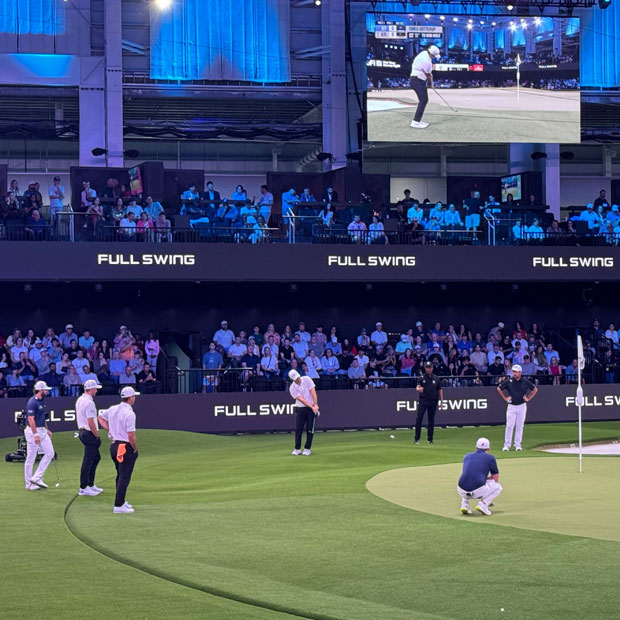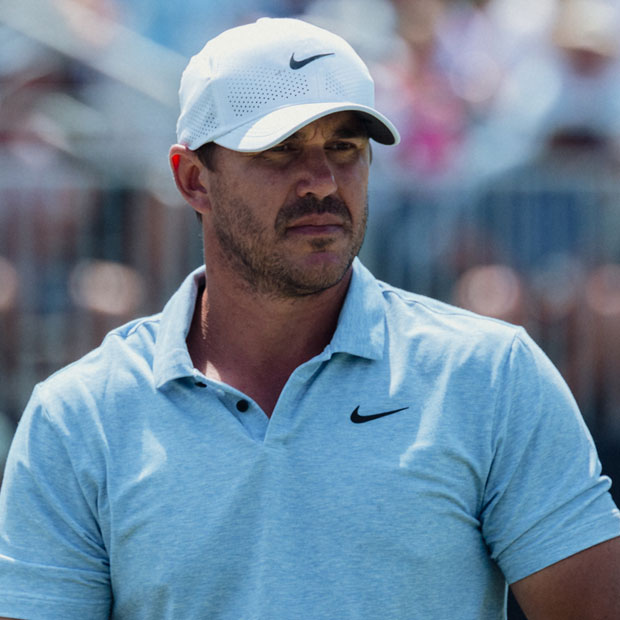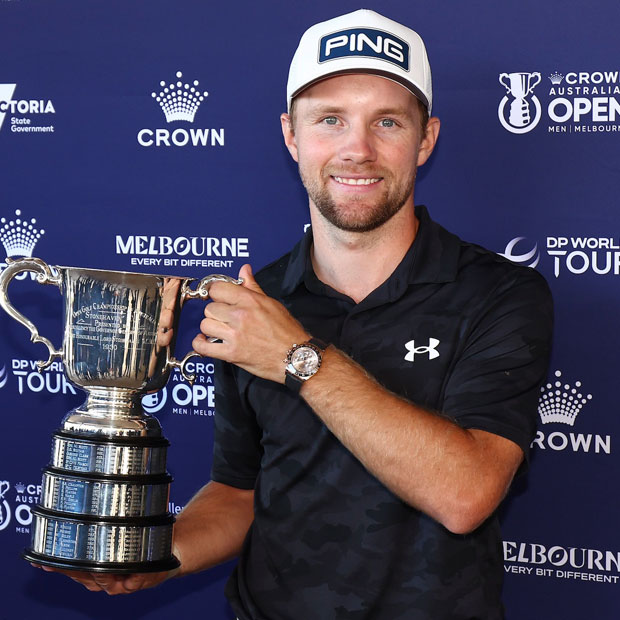Reckoning with the LIV List
TFE staff on what the LIV London field list says about itself, the PGA Tour, and golf's future


The release of a list of mishmash names sent the golf world into hysterics this week, but it was the start of monumental summer ahead in the battle over the structure of men’s professional golf. LIV Golf, the Saudi-backed disruption attempt, put its field out in the open for its first event next week in London. Finally, there were names to examine, defectors to critique, organizational efforts to appraise.
The Fried Egg staff offers a few of thoughts on the field list, what it means now and what it might mean next for LIV, the PGA Tour, and golf fans.
One Big Failure of the PGA Tour’s First Half Century
By Garrett Morrison
There are a few different reasons that players faithful to the PGA Tour have given for turning down LIV’s piles of cash. The most common one is that they want to compete against the best, and the best are currently on the PGA Tour. (Incidentally, the same rationale may lead these players to defect to the Saudi-backed league in a few years.) Others, like Max Homa and Jon Rahm, have spoken of their interest in history and their feeling that the Tour offers a better opportunity to leave a legacy. Some object to the source of LIV’s funding, but only Rory McIlroy has had the guts to address that topic publicly. Many, according to rumor, are simply leery of potential PR consequences and will take the LIV plunge as soon as they’re confident they won’t get “canceled.”
But you know what no one has said? “Man, I love Greg’s pitch, but I just can’t risk missing out on the Players Championship.” Or: “What about the FedEx Cup Playoffs? If I jumped to LIV, I’d probably have to skip those. No, thank you.” Or: “The Canadian Open was basically a major back in the day! I’ll be there, not London.”
In other words, PGA Tour members don’t seem to believe that PGA Tour events have real prestige, and that’s a big problem.
Consider, for instance, what would have happened if players believed that joining LIV would jeopardize their Masters invites. The names of Sergio García, Dustin Johnson, and Charl Schwartzel probably wouldn’t have appeared on the field list for LIV’s opener.
Not one PGA Tour event has that kind of hold on players. After 50-plus years running the top golf league in the world, Ponte Vedra HQ hasn’t managed to create a single tournament that its own members truly care about. The Players Championship should be one, but it keeps getting cheapened by try-hard theme songs, unintentionally hilarious “mixed-reality” activations, and other misfires from marketing executives who know nothing about golf. The FedEx Cup Playoffs are a directionless non-entity. Tournaments with real history and prestige—the L.A. Open, the Western Open, the Clambake, the Canadian Open—get wedged into bad spots in the schedule or rebranded into oblivion.
For decades, the Tour’s handling of its own events has prioritized short-term gain and convenience over the longer-term concerns of identity and tradition. Now we’re seeing the costs of that strategy.

New Names, New Questions
By Meg Adkins
The prospect of a second pro golf league long on corny slogans and short on a weekly product that’s entertaining and engaging for its fans isn’t really something to be excited about as a consumer. With the field for the London out in the open, a schism has started and the LIV speculation will continue to dominate the summer. A few storylines remain intriguing even if the incessant breakaway league chatter has grown exhausting. Here’s what I’m looking at next:
1. DJ’S First “Post-LIV Commitment” Press Conference
With a reported payday that could be as much as $150 million just for committing, DJ eclipsed his career PGA Tour earnings with one signature. Known for dial-tone, monosyllabic responses to all media inquiries except those about Masters concession items, how DJ handles the grilling he should/might get at his first press conference will be interesting, if not predictable. From questions about the money to sportswashing to the PGA Tour’s disciplinary action and so on, can DJ avoid the tongue-tied, word salad mess his other LIV counterparts have found themselves in?
2. Major Response
Up to this point, responding to the LIV threat was a no-win situation for the governing bodies in charge of the men’s majors. Waiting for the pieces to fall into place was the savvy move, but with multiple major champions in the field for the inaugural event, there has to be a plea for public positionings from Augusta National, the USGA, the PGA of America, and the R&A. While the PGA Tour will continue to play or overplay its hand with ban threats or something more lenient, it feels as if the governing bodies are the ones left to put their thumb on the scale and give players pause about jumping into the piles of Saudi cash. Could they be the savior the Tour needs to stonewall Greg Norman’s quest for free agency? Will mum remain the word until the 2023 majors? The biggest dominoes in today’s game of professional golf are the majors. Where they fall will be the next chapter in the LIV saga.
3. Phil the Thrill
The final six spots in the London field are vacant for now. Five will be filled from this week’s Asian tour event. Will the final spot be for Phil Mickelson? If so, it would mark the final, defiant step in his PGA Tour abandonment. And if you’re in the LIV camp, the first event would have to be considered a massive success with DJ and Phil as the headliners. It boggles the mind to think that 2021 PGA Champion Phil Mickelson, the oldest major winner ever, one of the top ten golfers of all time, could begin his attempt at an image makeover in London at the inaugural event for a rival league backed by an oppressive Saudi regime… as opposed to returning to the Tour he’s been a member of for 30 years and defending his PGA title a couple weeks ago at Southern Hills. If the past year has taught us anything, though, when it comes to Phil, nothing should surprise us.
Paying More for Less
By Brendan Porath
The DJ inclusion became the headline, a “surprise” because it represented a betrayal of a prior public statement as well as a legit, top-ranked player committing. Aside from that, however, the list was pretty much what we expected, which is not much. Its existence has created the drama, not its substance.
This is only the first of eight for 2022, however, and it’s naive to think there won’t be more defections with higher world rankings given all the money involved, especially when some of the detritus in this London field washes into a seven-figure pile of cash on the shore. The LIV effort to launch over the past year has exposed an organization of craven and clumsy personnel. The lack in competence and savvy is made up for in funding, which is endless and the only reason this thing progressed to this point despite the continued lack of structure on the immediate year or a precise vision on the future. They’re making it up as they go with cash as the continued safety net below. Unfortunately for golf fans, we’ve been dealt a disruptor that’s advancing in spite of its product offering.
All this is before we even get to the source of the money, which is using the players as pawns in a sportswashing effort as its sole purpose. But it likely will succeed in some measure because of that funding, which yields a potentially grim future for professional golf … if you’re the consumer. The players will be making more money than ever and perhaps with even less accountability for their performance relative to their “star” appeal. For the consumer, however, we’re going to get a diminished product on both sides, disparate groups around the world at events that feel even lower stakes with thinner fields. DJ absent from the Canadian Open makes that tournament worse, and the one he’s playing instead is wholly unappealing as a golf tournament, outside of the first-timer and rubbernecking curiosity that will subside. This is a bummer and the splintered approach has been a disaster for other sports that have gone down this road. “Competition makes things better” may just be an overly-simplistic platitude in this instance. For those who have grown tired of the PGA Tour week-to-week product, this is not the disruption you wanted.
This may sound like an appealing arrangement for the majors, whose importance would only go up if other products are diminished in the near-term. Or maybe they prefer the status quo, concerned about the Kramer Hickock line agitating for them to join the arms race and massively increase their own purses, coming from other pros that aren’t Kramer Hickock. You could have a few talents that consider the Saudi money to be so good that they don’t even care if it might preclude them from playing for majors, but that would likely be a small minority at the start. What’s clear is those four championships feel further apart than ever from all the other golf we’re going to get, and also powerful as ever.
Leave a comment or start a discussion
Engage in our content with thousands of other Fried Egg Golf Club Members
Engage in our content with thousands of other Fried Egg Golf Members
Get full access to exclusive benefits from Fried Egg Golf
- Member-only content
- Community discussions forums
- Member-only experiences and early access to events











Leave a comment or start a discussion
Lorem ipsum dolor sit amet, consectetur adipiscing elit. Suspendisse varius enim in eros elementum tristique. Duis cursus, mi quis viverra ornare, eros dolor interdum nulla, ut commodo diam libero vitae erat. Aenean faucibus nibh et justo cursus id rutrum lorem imperdiet. Nunc ut sem vitae risus tristique posuere. uis cursus, mi quis viverra ornare, eros dolor interdum nulla, ut commodo diam libero vitae erat. Aenean faucibus nibh et justo cursus id rutrum lorem imperdiet. Nunc ut sem vitae risus tristique posuere.